Product Description
About Factory
With more than 18 years’ histiory, we are a professinal manufacturer for drop forged products such as forged chain (X348 X458 X658 X678 X698 F100 F160), scraper chain (10160, 14218, 14226, 142N), conveyor trolley (X348, X458, X678, XT160), and drive chain (X348, X458, X678), and so forth standard moulds of chain.
Besides, we can also produce as per your drawing or sample, special link chain, pusher, pin and plate, according to customers’ unique requirements.
Product Description
1) Material: Alloy steel, 40Cr, 42CrMo and so on.
2) Types: Standard types, X348 X458 X678, and so on. (Or as per your drawing)
3) Process: Moulding→Forging→Polishing & Blasting→Fine machining→Heat treatment→Blasting→Inspecting & testing→Packing
Product Show
Technical Data
| Model | Dimension | Weight (Kg) | Material | Hardness | Working Load (KN) | Limit Load (KN) | ||||||
| P | T | C | S | F | R | D | ||||||
| 10160B | 101.6 | 24 | 36 | 13 | 14 | 6 | 14 | 0.32 | 20CrMnTi | Surface HRC56-64° Depth 0.6-1.2mm |
18 | 100 |
| 10160 | 101.6 | 30 | 36 | 13 | 14.5 | 9 | 14 | 0.36 | 20CrMnTi | Surface HRC56-64° Depth 0.6-1.2mm | 21.6 | 120 |
| 14218 | 142 | 42 | 50 | 19 | 20.5 | 11 | 25 | 1.15 | 20CrMnTi | Surface HRC56-64° Depth 0.6-1.2mm | 48.6 | 270 |
| 14226 | 142 | 62 | 50 | 28 | 30 | 15 | 25 | 1.75 | 20CrMnTi | Surface HRC56-64° Depth 0.6-1.2mm | 61.2 | 340 |
| 2571 | 200 | 66 | 60 | 30 | 32 | 18 | 30 | 2.8 | 20CrMnTi | Surface HRC56-64° Depth 0.6-1.2mm | 72 | 400 |
| 26014 | 260 | 70 | 75 | 31 | 33 | 20 | 34 | 5.2 | 20CrMnTi | Surface HRC56-64° Depth 0.6-1.2mm | 135 | 750 |
| 142N | 142 | 43 | 50 | 19 | 22 | 12.5 | 25 | 1.2 | 40Cr | Quench HRC36-44° | 75.6 | 420 |
| 150D | 142 | 42 | 50 | 19 | 20.5 | 11 | 25 | 1.15 | 40Cr | Quench HRC36-44° | 75.6 | 420 |
| MG20 | 200 | 70 | 50 | 27 | 29 | 17 | 35 | 3.78 | 40Cr | Quench HRC36-44° | 144 | 800 |
| MG20B | 200 | 70 | 50 | 27 | 29 | 17 | 30 | 3.82 | 40Cr | Quench HRC36-44° | 140.4 | 780 |
| MG20C | 200 | 70 | 50 | 27 | 29 | 17 | 28 | 3.85 | 40Cr | Quench HRC36-44° | 122.4 | 680 |
| MS32 | 200 | 42 | 50 | 20 | 22 | 12 | 25 | 1.4 | 40Cr | Quench HRC36-44° | 75.6 | 420 |
| MS55 | 200 | 80 | 70 | 35 | 38 | 25 | 28 | 4.36 | 40Cr | Quench HRC36-44° | 138.6 | 770 |
| 3006 | 200 | 65 | 70 | 30 | 33 | 24 | 32 | 3.6 | 40Cr | Quench HRC36-44° | 160.2 | 890 |
| MS63 | 250 | 70 | 80 | 30 | 33 | 20 | 32 | 4.93 | 40Cr | Quench HRC36-44° | 147.6 | 820 |
| S16 | 100 | 30 | 27 | 15 | 16 | 8 | 14 | 0.3 | 40Cr | Quench HRC36-44° | 16 | 88 |
| S20 | 125 | 34 | 33 | 17 | 18 | 8 | 17 | 0.37 | 40Cr | Quench HRC36-44° | 19.4 | 108 |
| S25 | 160 | 48 | 39 | 23 | 25 | 13 | 20 | 1.28 | 40Cr | Quench HRC36-44° | 55.8 | 310 |
| S30 | 142 | 46 | 49 | 22 | 23.5 | 14 | 25 | 1.3 | 40Cr | Quench HRC36-44° | 91.8 | 510 |
| Z16 | 100 | 40 | 35 | 18 | 20 | 12 | 17 | 0.4 | 40Cr | Quench HRC36-44° | 32.4 | 180 |
| Z20 | 125 | 50 | 46 | 24 | 26 | 15 | 20 | 0.67 | 40Cr | Quench HRC36-44° | 59.4 | 330 |
| Z20D | 125 | 52 | 60 | 24 | 26 | 16 | 26 | 1.15 | 40Cr | Quench HRC36-44° | 82.8 | 460 |
| Z25 | 160 | 58 | 55 | 28 | 30 | 18 | 25 | 2.25 | 40Cr | Quench HRC36-44° | 82.8 | 460 |
| Z25D | 160 | 66 | 64 | 29 | 31 | 22 | 28 | 2.6 | 40Cr | Quench HRC36-44° | 120.6 | 670 |
| Z30 | 142 | 64 | 50 | 29 | 30.5 | 18 | 25 | 1.8 | 40Cr | Quench HRC36-44° | 111.6 | 620 |
Products & Testing Equipments
Products Application
Packing & Delivery
Why Choose Us?
1. We are engaged in chain industry over 15 years with rich market experience. We keep improving production techniques. All the products have longer working life and have passed the market test.
2. We can design the correct chains with high quality material, good abrasion resistance, good corrosion, high strengthen and etc as per your request or the chain application.
3. We are the chain manufacturer; you can directly purchase the product from us with low price and high quality.
4. We have a professional team for international trade, they have abundant experiences and are always ready to solve problems for customers. So you have nothing to worry about.
5. We have the long-term cooperative forwarder who can give us the lowest freight. And it can help you to save the freight. What’s more, for the FCL, we will design the packages as per the container sizes with the largest capacity to save the shipping cost for both of us.
| Standard or Nonstandard: | Standard |
|---|---|
| Application: | Textile Machinery, Garment Machinery, Conveyer Equipment, Packaging Machinery, Electric Cars, Motorcycle, Food Machinery, Mining Equipment, Agricultural Machinery, Coating, Spraying, Mining, Slaughtering, Assembly |
| Surface Treatment: | Polishing |
| Structure: | Combined Chain |
| Material: | Alloy |
| Type: | Cranked Link Chain |
| Samples: |
US$ 5/Piece
1 Piece(Min.Order) | |
|---|
| Customization: |
Available
| Customized Request |
|---|
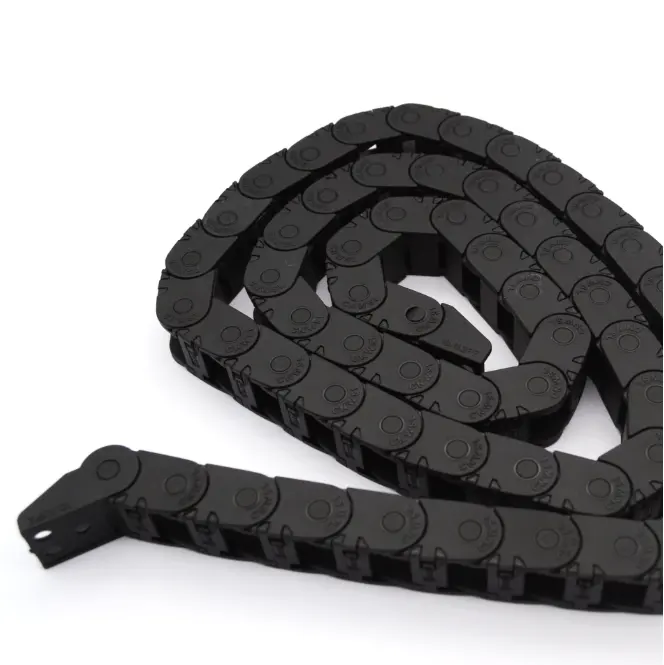
How do drag chains perform in high-precision and automated processes?
Drag chains excel in high-precision and automated processes, providing several key benefits that make them well-suited for these applications:
- Protecting Cables and Hoses: In high-precision environments, delicate cables and hoses must be protected from damage or tangling. Drag chains offer a secure housing that keeps cables organized and prevents them from being exposed to potential hazards.
- Smooth Cable Movement: Automated processes require precise and reliable cable movement. Drag chains ensure that cables and hoses move smoothly and without obstruction, reducing the risk of downtime and maintaining consistent performance.
- Reducing Friction and Wear: High-precision equipment often operates at faster speeds and with more frequent movements. Drag chains are designed to minimize friction and wear, extending the service life of cables and minimizing the need for frequent replacements.
- Flexible Cable Routing: Automated processes often involve complex cable routing requirements. Drag chains offer flexibility in cable management, allowing for custom configurations and ensuring that cables follow the precise path required by the automated machinery.
- Resistance to Contaminants: Automated processes may encounter various contaminants, such as dust, debris, or chemicals. Drag chains can be made from materials that resist these elements, protecting the cables and ensuring the machinery operates smoothly.
- Highly Durable: Drag chains are built to withstand constant use in automated processes. They are engineered to endure the demands of repetitive motion and high-precision operations without compromising performance.
- Improving Safety: By keeping cables and hoses securely contained within the drag chain, the risk of accidents or damage caused by loose cables is minimized, enhancing overall safety in the workplace.
- Customizable Designs: Drag chains can be tailored to fit specific automation setups, with options for size, length, and mounting configurations, ensuring they integrate seamlessly with the automated machinery.
With their ability to protect and manage cables, maintain smooth and reliable movement, and withstand the demands of high-precision and automated processes, drag chains play a critical role in optimizing efficiency, precision, and safety in a wide range of automated industrial applications.
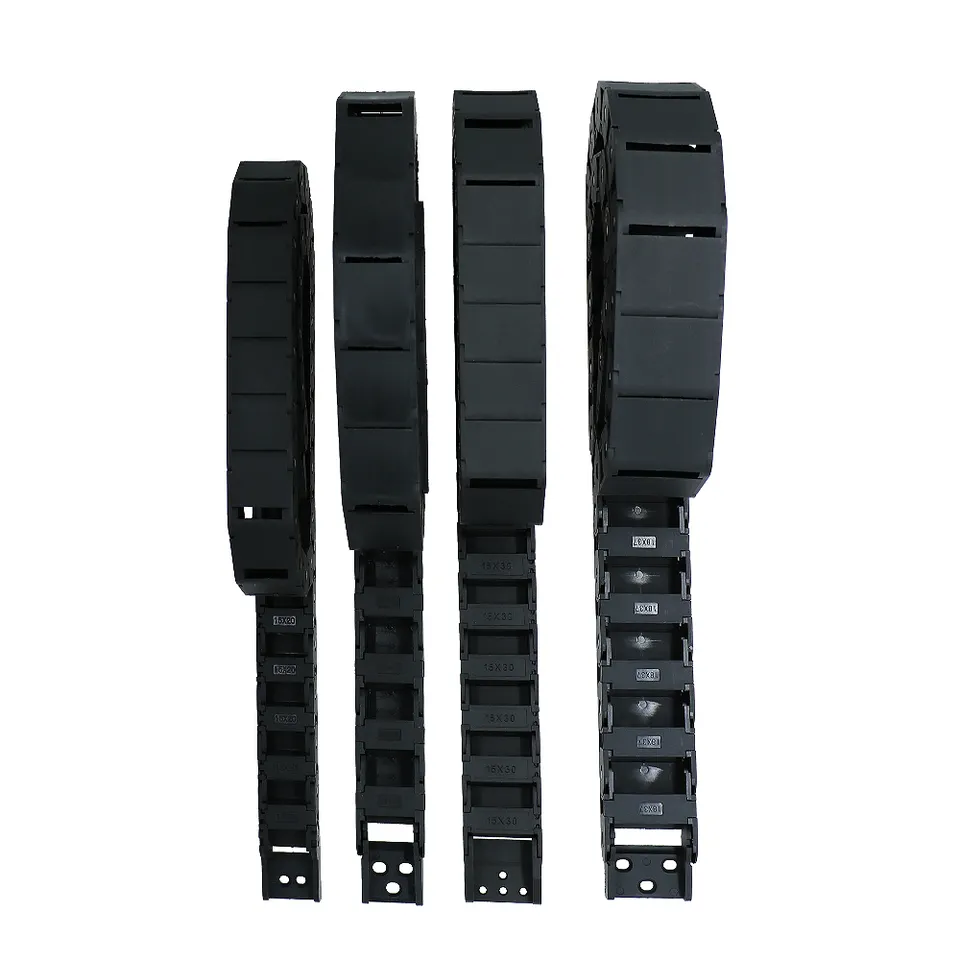
How do drag chains handle reverse motion or anti-reverse requirements?
Drag chains are designed to handle reverse motion or anti-reverse requirements in various industrial applications. When a system requires the prevention of backward movement or needs to maintain a specific orientation, anti-reverse or backstop mechanisms can be incorporated into the drag chain design. These mechanisms allow the drag chain to move freely in the desired direction while locking or resisting motion in the opposite direction.
The anti-reverse capabilities of drag chains are typically achieved through the use of specially designed components, such as one-way bearings or ratchet systems. These components allow the drag chain to engage or disengage the anti-reverse feature as needed, ensuring smooth movement in the desired direction and preventing any unintended reverse motion.
Some key points regarding how drag chains handle reverse motion and anti-reverse requirements are:
- One-Way Bearings: One-way bearings are commonly used in drag chains to enable free motion in one direction while providing resistance or locking in the opposite direction. These bearings allow the drag chain to engage with the system and move forward while preventing backward motion.
- Ratchet Mechanisms: Ratchet systems can be integrated into the drag chain to allow movement in one direction and restrict motion in the opposite direction. The ratchet mechanism engages when the drag chain moves in the intended direction and disengages when attempting to move in the reverse direction.
- Custom Solutions: In some cases, custom drag chain designs may be required to meet specific anti-reverse or backstop requirements of a particular application. Manufacturers can tailor drag chains to suit the unique needs of the system, ensuring precise control over motion and orientation.
Anti-reverse drag chains find applications in various industries where precise positioning, orientation control, or safety considerations are essential. For example, they may be used in conveyor systems to prevent products from rolling backward or in machinery that requires unidirectional movement.
When selecting a drag chain for applications that require anti-reverse capabilities, it is crucial to consider factors such as load capacity, speed, and the specific requirements of the motion control system to ensure optimal performance and reliability.
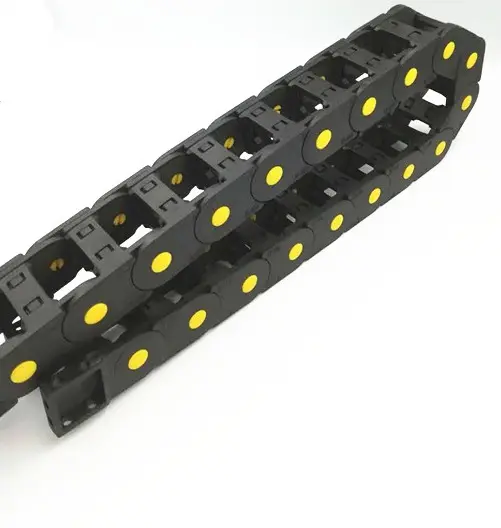
Can drag chains handle heavy loads and protect cables in dynamic environments?
Yes, drag chains are designed to handle heavy loads and provide effective cable protection in dynamic environments commonly found in industrial applications.
Drag chains are constructed from durable and robust materials, such as plastic or metal, which enables them to withstand the weight of numerous cables and hoses. They are engineered to carry a variety of cables, including power cables, data cables, hydraulic hoses, and pneumatic lines, all within a single chain structure.
The design and construction of drag chains allow them to operate smoothly in dynamic environments, where there are constant movements, vibrations, and changes in motion. They can handle multi-axis movement, such as back-and-forth, side-to-side, and rotational motions, without compromising cable protection.
Drag chains utilize flexible links that allow for bending and twisting, ensuring that the cables inside can move freely and follow the motion of the connected machinery or equipment. This flexibility prevents cable fatigue and reduces the risk of damage caused by repetitive motion or constant tension.
In dynamic environments, where machinery or equipment experiences rapid acceleration and deceleration, drag chains play a crucial role in keeping the cables organized and preventing them from tangling or snagging. They act as a reliable cable carrier, guiding the cables along the intended path and protecting them from potential hazards.
Furthermore, drag chains are equipped with various mounting options and brackets to secure them to the equipment securely. This anchoring ensures that the drag chain remains in place even during fast-paced movements, providing consistent cable protection and preventing unnecessary strain on the cables.
In summary, drag chains are well-suited for handling heavy loads and providing effective cable protection in dynamic industrial environments. They offer flexibility, durability, and reliable cable management, making them a vital component in ensuring the longevity and optimal performance of cables in various industrial settings.


editor by CX 2023-11-08
China supplier X348 China Factory of Roller Drive Chain Steel Forging Chain and Industry Transmission Conveyor Drag Standard Chain with Forged Link Cast Carbon Steel Chain
Product Description
About Factory
With more than 18 years’ histiory, we are a professinal manufacturer for drop forged products such as forged chain (X348 X458 X658 X678 X698 F100 F160), scraper chain (10160, 14218, 14226, 142N), conveyor trolley (X348, X458, X678, XT160), and drive chain (X348, X458, X678), and so forth standard moulds of chain.
Besides, we can also produce as per your drawing or sample, special link chain, pusher, pin and plate, according to customers’ unique requirements.
Product Description
1) Material: Alloy steel, 40Cr, 42CrMo and so on.
2) Types: Standard types, X348 X458 X678, and so on. (Or as per your drawing)
3) Process: Moulding→Forging→Polishing & Blasting→Fine machining→Heat treatment→Blasting→Inspecting & testing→Packing
Product Show
Technical Data
| Model | Dimension | Weight (Kg) | Material | Hardness | Working Load (KN) | Limit Load (KN) | ||||||
| P | T | C | S | F | R | D | ||||||
| 10160B | 101.6 | 24 | 36 | 13 | 14 | 6 | 14 | 0.32 | 20CrMnTi | Surface HRC56-64° Depth 0.6-1.2mm |
18 | 100 |
| 10160 | 101.6 | 30 | 36 | 13 | 14.5 | 9 | 14 | 0.36 | 20CrMnTi | Surface HRC56-64° Depth 0.6-1.2mm | 21.6 | 120 |
| 14218 | 142 | 42 | 50 | 19 | 20.5 | 11 | 25 | 1.15 | 20CrMnTi | Surface HRC56-64° Depth 0.6-1.2mm | 48.6 | 270 |
| 14226 | 142 | 62 | 50 | 28 | 30 | 15 | 25 | 1.75 | 20CrMnTi | Surface HRC56-64° Depth 0.6-1.2mm | 61.2 | 340 |
| 2571 | 200 | 66 | 60 | 30 | 32 | 18 | 30 | 2.8 | 20CrMnTi | Surface HRC56-64° Depth 0.6-1.2mm | 72 | 400 |
| 26014 | 260 | 70 | 75 | 31 | 33 | 20 | 34 | 5.2 | 20CrMnTi | Surface HRC56-64° Depth 0.6-1.2mm | 135 | 750 |
| 142N | 142 | 43 | 50 | 19 | 22 | 12.5 | 25 | 1.2 | 40Cr | Quench HRC36-44° | 75.6 | 420 |
| 150D | 142 | 42 | 50 | 19 | 20.5 | 11 | 25 | 1.15 | 40Cr | Quench HRC36-44° | 75.6 | 420 |
| MG20 | 200 | 70 | 50 | 27 | 29 | 17 | 35 | 3.78 | 40Cr | Quench HRC36-44° | 144 | 800 |
| MG20B | 200 | 70 | 50 | 27 | 29 | 17 | 30 | 3.82 | 40Cr | Quench HRC36-44° | 140.4 | 780 |
| MG20C | 200 | 70 | 50 | 27 | 29 | 17 | 28 | 3.85 | 40Cr | Quench HRC36-44° | 122.4 | 680 |
| MS32 | 200 | 42 | 50 | 20 | 22 | 12 | 25 | 1.4 | 40Cr | Quench HRC36-44° | 75.6 | 420 |
| MS55 | 200 | 80 | 70 | 35 | 38 | 25 | 28 | 4.36 | 40Cr | Quench HRC36-44° | 138.6 | 770 |
| 3006 | 200 | 65 | 70 | 30 | 33 | 24 | 32 | 3.6 | 40Cr | Quench HRC36-44° | 160.2 | 890 |
| MS63 | 250 | 70 | 80 | 30 | 33 | 20 | 32 | 4.93 | 40Cr | Quench HRC36-44° | 147.6 | 820 |
| S16 | 100 | 30 | 27 | 15 | 16 | 8 | 14 | 0.3 | 40Cr | Quench HRC36-44° | 16 | 88 |
| S20 | 125 | 34 | 33 | 17 | 18 | 8 | 17 | 0.37 | 40Cr | Quench HRC36-44° | 19.4 | 108 |
| S25 | 160 | 48 | 39 | 23 | 25 | 13 | 20 | 1.28 | 40Cr | Quench HRC36-44° | 55.8 | 310 |
| S30 | 142 | 46 | 49 | 22 | 23.5 | 14 | 25 | 1.3 | 40Cr | Quench HRC36-44° | 91.8 | 510 |
| Z16 | 100 | 40 | 35 | 18 | 20 | 12 | 17 | 0.4 | 40Cr | Quench HRC36-44° | 32.4 | 180 |
| Z20 | 125 | 50 | 46 | 24 | 26 | 15 | 20 | 0.67 | 40Cr | Quench HRC36-44° | 59.4 | 330 |
| Z20D | 125 | 52 | 60 | 24 | 26 | 16 | 26 | 1.15 | 40Cr | Quench HRC36-44° | 82.8 | 460 |
| Z25 | 160 | 58 | 55 | 28 | 30 | 18 | 25 | 2.25 | 40Cr | Quench HRC36-44° | 82.8 | 460 |
| Z25D | 160 | 66 | 64 | 29 | 31 | 22 | 28 | 2.6 | 40Cr | Quench HRC36-44° | 120.6 | 670 |
| Z30 | 142 | 64 | 50 | 29 | 30.5 | 18 | 25 | 1.8 | 40Cr | Quench HRC36-44° | 111.6 | 620 |
Products & Testing Equipments
Products Application
Packing & Delivery
Why Choose Us?
1. We are engaged in chain industry over 15 years with rich market experience. We keep improving production techniques. All the products have longer working life and have passed the market test.
2. We can design the correct chains with high quality material, good abrasion resistance, good corrosion, high strengthen and etc as per your request or the chain application.
3. We are the chain manufacturer; you can directly purchase the product from us with low price and high quality.
4. We have a professional team for international trade, they have abundant experiences and are always ready to solve problems for customers. So you have nothing to worry about.
5. We have the long-term cooperative forwarder who can give us the lowest freight. And it can help you to save the freight. What’s more, for the FCL, we will design the packages as per the container sizes with the largest capacity to save the shipping cost for both of us.
| Standard or Nonstandard: | Standard |
|---|---|
| Application: | Textile Machinery, Garment Machinery, Conveyer Equipment, Packaging Machinery, Electric Cars, Motorcycle, Food Machinery, Mining Equipment, Agricultural Machinery, Coating, Spraying, Mining, Slaughtering, Assembly |
| Surface Treatment: | Polishing |
| Structure: | Combined Chain |
| Material: | Alloy |
| Type: | Cranked Link Chain |
| Samples: |
US$ 5/Piece
1 Piece(Min.Order) | |
|---|
| Customization: |
Available
| Customized Request |
|---|
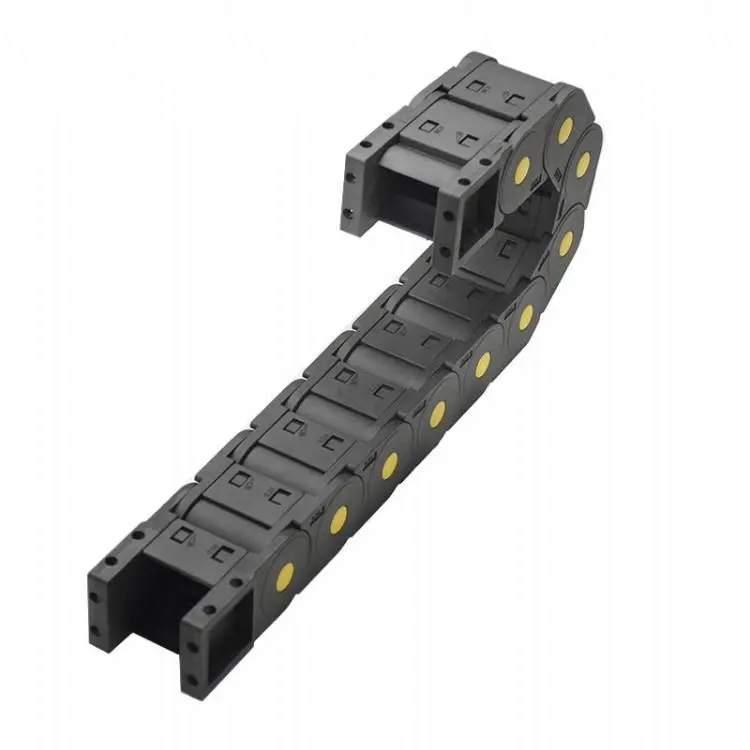
Can drag chains be used in aerospace and defense applications?
Yes, drag chains can be used in aerospace and defense applications. The aerospace and defense industries often require reliable and efficient cable management systems to protect and guide cables in various equipment and machinery. Drag chains, also known as cable carriers or cable chains, offer several benefits that make them suitable for these demanding applications:
- Cable Protection: Aerospace and defense equipment often involve complex and sensitive electrical and data cables. Drag chains provide a secure and enclosed pathway for these cables, protecting them from external elements, such as debris, chemicals, and extreme weather conditions.
- Motion Control: Aircraft, spacecraft, and defense systems frequently undergo dynamic movements, including vibrations, acceleration, and deceleration. Drag chains are designed to handle continuous flexing and bending, ensuring that cables can move freely without getting damaged or tangled.
- Space Optimization: In aerospace and defense applications, space is often limited and precious. Drag chains offer a space-efficient solution for cable management, as they keep cables neatly organized and prevent them from cluttering the equipment’s interior.
- Reduced Downtime: The reliable cable protection provided by drag chains minimizes the risk of cable damage, reducing maintenance and downtime associated with cable failures. This is crucial in critical aerospace and defense systems where reliability is paramount.
- Customization: Drag chains are available in various sizes, materials, and configurations, allowing them to be customized to suit the specific needs of aerospace and defense applications. They can be designed to accommodate a wide range of cable types and sizes.
- High-Quality Materials: Drag chains made from high-quality materials, such as stainless steel or reinforced plastics, offer excellent resistance to chemicals, abrasion, and temperature extremes – essential properties in aerospace and defense environments.
- EMI/RFI Shielding: Some drag chains come with EMI/RFI shielding options, ensuring electromagnetic compatibility and protecting sensitive electronics from interference.
Given their robustness, versatility, and ability to handle harsh operating conditions, drag chains have become a valuable cable management solution in aerospace and defense industries, where maintaining signal integrity and system reliability is of utmost importance.
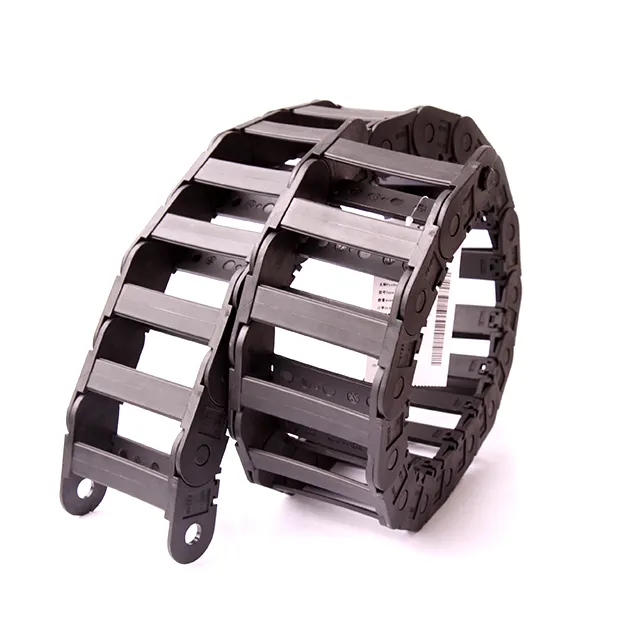
What are the benefits of using a plastic drag chain in certain environments?
Plastic drag chains offer several advantages in specific environments and applications due to their unique characteristics. Here are the key benefits:
Lightweight:
Plastic drag chains are lightweight compared to metal alternatives. This makes them ideal for applications where weight is a concern, such as in robotics and automation systems. The reduced weight helps in improving the overall performance and efficiency of the equipment.
Corrosion Resistance:
Plastics are naturally resistant to corrosion, making plastic drag chains suitable for environments where exposure to moisture, chemicals, or corrosive substances is a concern. They can withstand harsh conditions without deteriorating over time.
Low Friction:
Plastic drag chains have a low coefficient of friction, which reduces the wear and tear on cables and hoses as they move within the chain. The smooth surface of plastic helps in maintaining the integrity of the cables and ensures their long life.
Quiet Operation:
Compared to metal drag chains, plastic drag chains produce less noise during operation. This is especially beneficial in environments where noise reduction is essential, such as in laboratories, cleanrooms, and other noise-sensitive areas.
Chemical Resistance:
Plastic drag chains can withstand exposure to a wide range of chemicals and solvents without degradation. This makes them suitable for industries that handle aggressive chemicals or where chemical spills are possible.
Cost-Effective:
Plastic drag chains are often more affordable than their metal counterparts. For budget-conscious applications or projects with specific cost constraints, plastic drag chains provide a cost-effective cable management solution without compromising on performance.
Easy Installation and Maintenance:
Plastic drag chains are easy to install and require minimal maintenance. They do not require lubrication, and their self-lubricating properties contribute to smooth movement and long service life.
Electrical Insulation:
As plastics are electrical insulators, plastic drag chains provide an added layer of protection for electrical cables and wires. They help in preventing electrical interference and ensure the safety of the equipment and operators.
It’s important to note that while plastic drag chains offer numerous benefits, their selection should be based on the specific requirements of the application and the environmental conditions they will be exposed to. In certain environments, such as those with extremely high temperatures or heavy loads, metal drag chains may still be the preferred choice due to their higher temperature and load capacities.
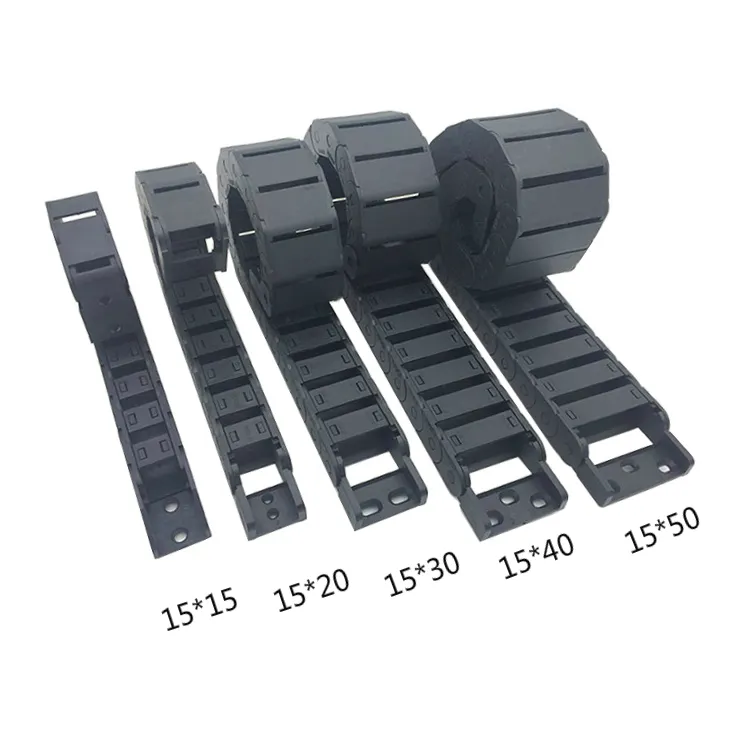
Can drag chains be used in robotic systems and automated machinery?
Yes, drag chains are commonly used in robotic systems and automated machinery to manage and protect cables and hoses. Robotic systems and automated machinery often require a complex network of cables and hoses to power and control the various moving parts and components. Drag chains offer a reliable solution for organizing and guiding these cables, ensuring smooth and efficient operations.
Benefits of using drag chains in robotic systems and automated machinery:
1. Cable Protection: Drag chains enclose and protect cables and hoses from external elements such as dust, debris, and mechanical stress. This protection prevents cable damage, extends their lifespan, and reduces the risk of costly downtime due to cable failures.
2. Cable Management: With a drag chain, cables are neatly organized and guided along a predefined path, reducing the chances of tangling or snagging during the robotic or machine movements. This organized cable management contributes to smoother and more precise operations.
3. Flexibility and Range of Motion: Drag chains are designed to flex and bend, allowing the cables to move freely with the robotic arm or machinery. This flexibility ensures that the cables can follow the range of motion required without any restrictions.
4. Space Optimization: In robotic systems and automated machinery where space is often limited, drag chains provide a space-efficient solution for cable management. They keep cables contained in a compact manner, optimizing the use of available space.
5. Safety: Drag chains contribute to the overall safety of robotic systems and automated machinery by preventing cable entanglement or tripping hazards. The organized cable management reduces the risk of accidents and ensures a safer working environment.
6. Increased Reliability: Reliable cable management provided by drag chains leads to improved overall system reliability. The reduced wear and tear on cables, along with the protection from external factors, result in more dependable and long-lasting performance.
7. Easy Installation and Maintenance: Drag chains are designed for easy installation and maintenance. Cables can be easily added or removed from the chain as needed, simplifying the maintenance process.
In summary, drag chains are essential components in robotic systems and automated machinery, ensuring efficient cable management, protection, and safety. They contribute to the smooth operation and longevity of these systems, making them widely used in a variety of industrial applications.


editor by CX 2023-10-25
China OEM Chinese Factory of Roller Drive Chain Steel Forging Chain and Industry Transmission Conveyor Drag Standard Chain with Forged Link Cast Carbon Steel Chain
Product Description
About Factory
With more than 18 years’ histiory, we are a professinal manufacturer for drop forged products such as forged chain (X348 X458 X658 X678 X698 F100 F160), scraper chain (10160, 14218, 14226, 142N), conveyor trolley (X348, X458, X678, XT160), and drive chain (X348, X458, X678), and so forth standard moulds of chain.
Besides, we can also produce as per your drawing or sample, special link chain, pusher, pin and plate, according to customers’ unique requirements.
Product Description
1) Material: Alloy steel, 40Cr, 42CrMo and so on.
2) Types: Standard types, X348 X458 X678, and so on. (Or as per your drawing)
3) Process: Moulding→Forging→Polishing & Blasting→Fine machining→Heat treatment→Blasting→Inspecting & testing→Packing
Product Show
Technical Data
| Model | Dimension | Weight (Kg) | Material | Hardness | Working Load (KN) | Limit Load (KN) | ||||||
| P | T | C | S | F | R | D | ||||||
| 10160B | 101.6 | 24 | 36 | 13 | 14 | 6 | 14 | 0.32 | 20CrMnTi | Surface HRC56-64° Depth 0.6-1.2mm |
18 | 100 |
| 10160 | 101.6 | 30 | 36 | 13 | 14.5 | 9 | 14 | 0.36 | 20CrMnTi | Surface HRC56-64° Depth 0.6-1.2mm | 21.6 | 120 |
| 14218 | 142 | 42 | 50 | 19 | 20.5 | 11 | 25 | 1.15 | 20CrMnTi | Surface HRC56-64° Depth 0.6-1.2mm | 48.6 | 270 |
| 14226 | 142 | 62 | 50 | 28 | 30 | 15 | 25 | 1.75 | 20CrMnTi | Surface HRC56-64° Depth 0.6-1.2mm | 61.2 | 340 |
| 2571 | 200 | 66 | 60 | 30 | 32 | 18 | 30 | 2.8 | 20CrMnTi | Surface HRC56-64° Depth 0.6-1.2mm | 72 | 400 |
| 26014 | 260 | 70 | 75 | 31 | 33 | 20 | 34 | 5.2 | 20CrMnTi | Surface HRC56-64° Depth 0.6-1.2mm | 135 | 750 |
| 142N | 142 | 43 | 50 | 19 | 22 | 12.5 | 25 | 1.2 | 40Cr | Quench HRC36-44° | 75.6 | 420 |
| 150D | 142 | 42 | 50 | 19 | 20.5 | 11 | 25 | 1.15 | 40Cr | Quench HRC36-44° | 75.6 | 420 |
| MG20 | 200 | 70 | 50 | 27 | 29 | 17 | 35 | 3.78 | 40Cr | Quench HRC36-44° | 144 | 800 |
| MG20B | 200 | 70 | 50 | 27 | 29 | 17 | 30 | 3.82 | 40Cr | Quench HRC36-44° | 140.4 | 780 |
| MG20C | 200 | 70 | 50 | 27 | 29 | 17 | 28 | 3.85 | 40Cr | Quench HRC36-44° | 122.4 | 680 |
| MS32 | 200 | 42 | 50 | 20 | 22 | 12 | 25 | 1.4 | 40Cr | Quench HRC36-44° | 75.6 | 420 |
| MS55 | 200 | 80 | 70 | 35 | 38 | 25 | 28 | 4.36 | 40Cr | Quench HRC36-44° | 138.6 | 770 |
| 3006 | 200 | 65 | 70 | 30 | 33 | 24 | 32 | 3.6 | 40Cr | Quench HRC36-44° | 160.2 | 890 |
| MS63 | 250 | 70 | 80 | 30 | 33 | 20 | 32 | 4.93 | 40Cr | Quench HRC36-44° | 147.6 | 820 |
| S16 | 100 | 30 | 27 | 15 | 16 | 8 | 14 | 0.3 | 40Cr | Quench HRC36-44° | 16 | 88 |
| S20 | 125 | 34 | 33 | 17 | 18 | 8 | 17 | 0.37 | 40Cr | Quench HRC36-44° | 19.4 | 108 |
| S25 | 160 | 48 | 39 | 23 | 25 | 13 | 20 | 1.28 | 40Cr | Quench HRC36-44° | 55.8 | 310 |
| S30 | 142 | 46 | 49 | 22 | 23.5 | 14 | 25 | 1.3 | 40Cr | Quench HRC36-44° | 91.8 | 510 |
| Z16 | 100 | 40 | 35 | 18 | 20 | 12 | 17 | 0.4 | 40Cr | Quench HRC36-44° | 32.4 | 180 |
| Z20 | 125 | 50 | 46 | 24 | 26 | 15 | 20 | 0.67 | 40Cr | Quench HRC36-44° | 59.4 | 330 |
| Z20D | 125 | 52 | 60 | 24 | 26 | 16 | 26 | 1.15 | 40Cr | Quench HRC36-44° | 82.8 | 460 |
| Z25 | 160 | 58 | 55 | 28 | 30 | 18 | 25 | 2.25 | 40Cr | Quench HRC36-44° | 82.8 | 460 |
| Z25D | 160 | 66 | 64 | 29 | 31 | 22 | 28 | 2.6 | 40Cr | Quench HRC36-44° | 120.6 | 670 |
| Z30 | 142 | 64 | 50 | 29 | 30.5 | 18 | 25 | 1.8 | 40Cr | Quench HRC36-44° | 111.6 | 620 |
Products & Testing Equipments
Products Application
Packing & Delivery
Why Choose Us?
1. We are engaged in chain industry over 15 years with rich market experience. We keep improving production techniques. All the products have longer working life and have passed the market test.
2. We can design the correct chains with high quality material, good abrasion resistance, good corrosion, high strengthen and etc as per your request or the chain application.
3. We are the chain manufacturer; you can directly purchase the product from us with low price and high quality.
4. We have a professional team for international trade, they have abundant experiences and are always ready to solve problems for customers. So you have nothing to worry about.
5. We have the long-term cooperative forwarder who can give us the lowest freight. And it can help you to save the freight. What’s more, for the FCL, we will design the packages as per the container sizes with the largest capacity to save the shipping cost for both of us.
| Standard or Nonstandard: | Standard |
|---|---|
| Application: | Textile Machinery, Garment Machinery, Conveyer Equipment, Packaging Machinery, Electric Cars, Motorcycle, Food Machinery, Mining Equipment, Agricultural Machinery, Coating, Spraying, Mining, Slaughtering, Assembly |
| Surface Treatment: | Polishing |
| Structure: | Combined Chain |
| Material: | Alloy |
| Type: | Cranked Link Chain |
| Samples: |
US$ 5/Piece
1 Piece(Min.Order) | |
|---|
| Customization: |
Available
| Customized Request |
|---|
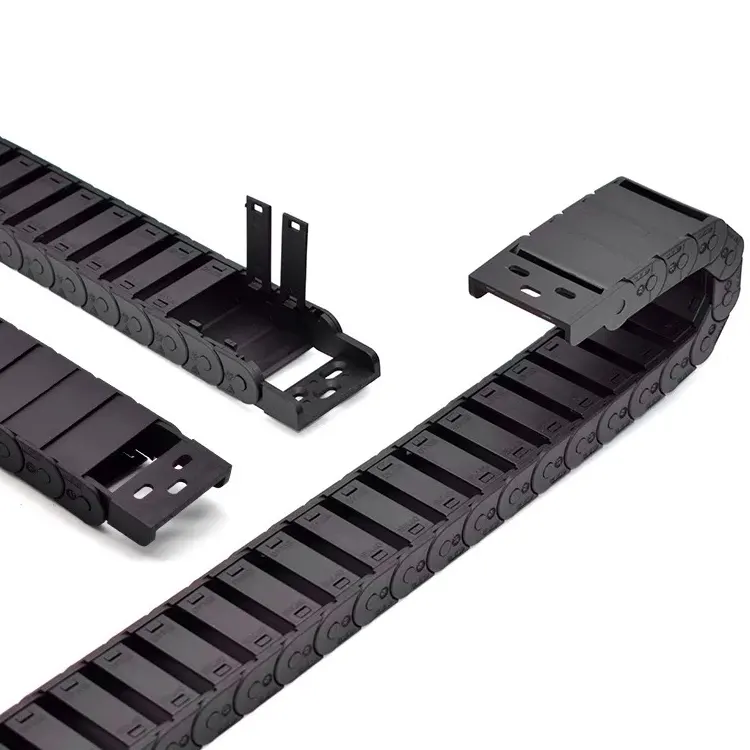
Can drag chains be used in the packaging and bottling industry?
Yes, drag chains can be used in the packaging and bottling industry, and they offer several advantages that make them a suitable choice for this application:
- Cable Protection: In the packaging and bottling industry, there are various electrical cables, pneumatic hoses, and fluid lines that need to be protected from damage. Drag chains provide a secure housing that prevents these vital components from being exposed to potential hazards, such as moving machinery or sharp edges.
- Reduced Downtime: Packaging and bottling operations often involve high-speed and continuous movement of machinery. Drag chains keep cables organized and prevent tangling, reducing the risk of cable damage and minimizing downtime caused by cable-related issues.
- Flexible Cable Routing: The packaging and bottling industry often requires complex cable routing to accommodate various machinery configurations. Drag chains offer flexibility in cable management, allowing for customized cable routing to suit specific production setups.
- Improved Safety: Loose cables and hoses can pose safety hazards in a fast-paced packaging environment. Drag chains ensure that cables are contained and out of the way, reducing the risk of accidents and enhancing overall workplace safety.
- Resistance to Contaminants: In the packaging industry, there may be exposure to dust, debris, and cleaning agents. Drag chains can be made from materials that resist these contaminants, ensuring the cables remain protected and functional even in harsh environments.
- Highly Durable: Drag chains are designed to withstand continuous use and repetitive motion. They are built to endure the demands of high-speed packaging operations and maintain reliable performance over extended periods.
- Customizable Designs: Packaging and bottling machinery often come in various sizes and configurations. Drag chains can be customized in terms of size, length, and mounting options to fit specific packaging equipment.
Overall, drag chains provide effective cable management, enhance equipment reliability, and contribute to the efficiency and safety of packaging and bottling processes in the industry.
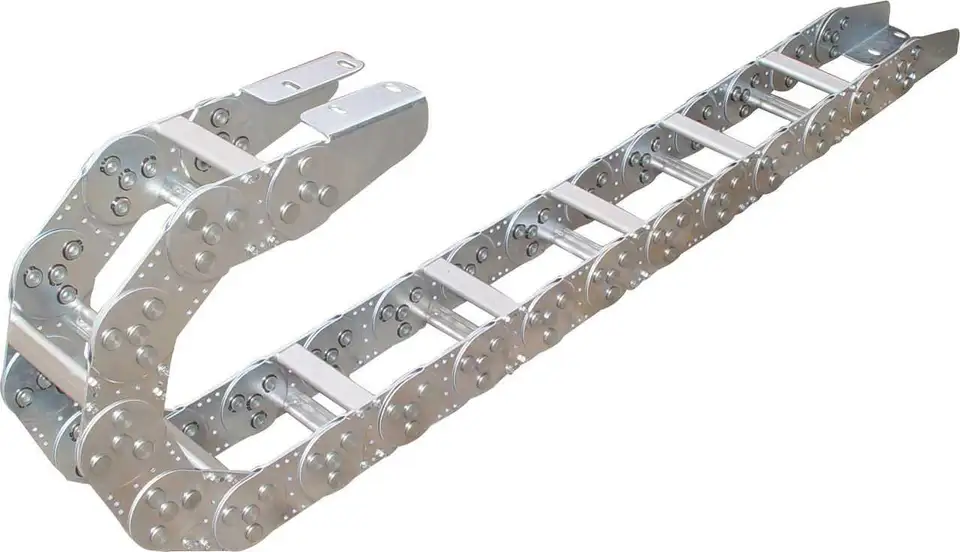
Can drag chains be used in the energy and power generation sector?
Yes, drag chains are commonly used in the energy and power generation sector for cable management and protection. The energy and power generation industry includes power plants, renewable energy facilities, electrical substations, and other related applications. Here’s how drag chains are utilized in this sector:
- Cable Protection: The energy and power generation sector often involves a complex network of cables and hoses that carry electricity, signals, and fluids. Drag chains are used to protect these cables from damage caused by continuous motion, abrasion, and exposure to external elements.
- Dynamic Applications: In power generation facilities, various equipment such as turbines, generators, and transformers require dynamic cable management due to continuous movement. Drag chains can handle these dynamic applications, ensuring that cables and hoses remain organized and safely routed during equipment operation.
- Harsh Environments: Power plants and substations may expose cables to harsh environments, including extreme temperatures, chemicals, and outdoor conditions. Drag chains made from durable and corrosion-resistant materials can withstand these challenges, providing reliable cable protection and management.
- High Loads: Drag chains are capable of supporting multiple cables and hoses, even in applications with high loads and complex cable configurations. They prevent cables from tangling, getting caught, or suffering excessive stress during equipment operation.
- Long Travel Distances: In some power generation facilities, cables may need to travel long distances to connect different components and systems. Drag chains facilitate smooth movement over these long travel distances, ensuring that cables are managed efficiently and without interference.
- Enhanced Safety: Cable management is critical in the power generation sector to maintain a safe working environment. Drag chains keep cables organized, reducing the risk of accidents caused by cable entanglement or tripping hazards.
- Reliability and Longevity: Drag chains are designed for long service life and reliable performance, minimizing downtime and maintenance requirements. This is especially important in critical power generation applications where uninterrupted operation is essential.
Overall, drag chains play a crucial role in the energy and power generation sector by providing efficient cable management and protection. Their ability to handle continuous flexing, harsh environments, and dynamic applications makes them a valuable solution for ensuring the reliability and safety of cable systems in this industry.
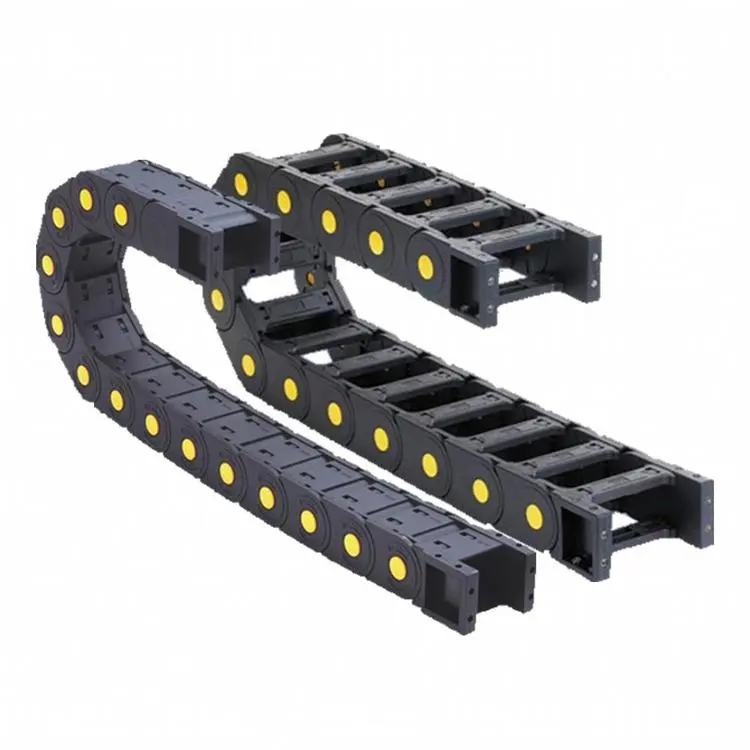
What materials are drag chains typically made of to ensure durability?
Drag chains are typically made of various materials that are carefully chosen to ensure durability and longevity in industrial applications. The choice of materials depends on factors such as the application’s environment, load capacity requirements, and the type of cables or hoses they will be carrying. Some common materials used in drag chain construction include:
1. Plastic (Polymer): High-quality engineering plastics, such as nylon, polypropylene, or polyethylene, are commonly used for lightweight and low-cost drag chains. These plastic chains offer excellent resistance to corrosion, chemicals, and moisture, making them suitable for a wide range of industrial environments.
2. Steel: Drag chains made of steel are known for their high strength and durability, making them ideal for heavy-duty applications and environments with high impact or abrasive conditions. Steel chains are capable of carrying heavy loads and provide superior protection for cables and hoses.
3. Stainless Steel: For applications requiring additional resistance to corrosion and chemicals, stainless steel drag chains are preferred. They are especially useful in industries where exposure to harsh environments or frequent washdowns is common, such as food processing, pharmaceuticals, and outdoor applications.
4. Aluminum: Aluminum drag chains offer a lightweight alternative to steel while still providing sufficient strength for many industrial applications. They are often used in applications where weight reduction is essential, such as in robotics and automation systems.
5. Hybrid Chains: Some drag chains feature hybrid designs, combining multiple materials to optimize performance. For example, a drag chain might have a plastic body with reinforced steel or stainless steel links for added strength and rigidity.
Overall, the choice of material for a drag chain depends on the specific requirements of the application, including the load capacity, environmental conditions, and the need for resistance to corrosion, chemicals, and other external factors. By selecting the appropriate material, drag chains can ensure durability and reliable cable protection in a wide range of industrial settings.


editor by CX 2023-09-19
China Best Sales Factory Supply CNC Chip Conveyor Chain Various Pitch Steel Plate Hinged Conveyor Chain a2040 roller chain
Relevant Industries: Manufacturing Plant
Showroom Spot: None
Situation: New
Material: stainless metal, stainless metal. Carbon metal.
Framework: Hinged belt chip conveyor
Electricity: .75 KW
Warranty: 2 years
Width or Diameter: OEM
Machinery Take a look at Report: Provided
Video outgoing-inspection: Supplied
Advertising Type: Regular Solution
Guarantee of core factors: 2 several years
Core Components: steel
Bodyweight (KG): 50 kg
Solution: hinge conveyor belt
Pitch 1: 31.75mm, 38.1mm, 50.8mm, sixty three.5mm, 76.2mm, one hundred and one.6mm
Belt Width: 100mm — 500mm
Surface area: Flat, Bumps, Holes, Pits
Barrier Plate Shape: -shape, S form, W form
Operate: Areas for Hinged belt Conveyor
Software: transportation
Dimension(L*W*H): Custom-made Measurement
Customization: yes
Packaging Details: cartons/wooden situation/pallet
Manufacturing facility Provide CNC Chip Conveyor Chain A variety of Pitch Metal Plate Hinged Conveyor Chain Hinge conveyor belt Ruiao focus in both standard and custom-made manufacturing facility hinge conveyor chain. We provide useful system patterns and performance certain options. We can tailor a metal chip processing conveyor or method to any end-person need.Hinge conveyor belt is divided into a range of chip elimination equipment, the width can be produced according to person requirements.(1)our chain plate conveyor belt offers complete answers to mechanical managing difficulties.(2)substance:stainless metal 304 or 201, carbon steel Q235.(3)application:largely utilized in excluding scraps in all kinds of system and coal mine,metallurgy products.thanks for your interest, we have our personal manufacturing unit . i believe our price is the most affordable on its CZPT perform. Particulars Technological parameters
| Pitch (mm) | Application of hinged conveyor chain |
| 31.seventy five | Small host and short distance transportation |
| 38.1 | Small and medium short delivery |
| 50.8 | Large and medium-sized host and transmitted above a prolonged length |
| 63.five | Large and medium-sized host and transmitted in excess of a long length |
| 76.two | Large and medium-sized host and transmitted above a lengthy distance |
| 101.six | Large and medium-sized host and transmitted over a extended length |
Three important aspects of the drive chain
One of the advantages of a drive chain is that it is relatively light. It sends nearly all of the engine’s power to the rear wheels, even if it loses some power along the way. Engine power on a dyno is different than on the road. Therefore, the chain is the most efficient way to transmit power to the rear wheel. Let’s look at three important aspects of the drive chain. Here are some facts about them.
roller chain drive
When choosing a roller chain drive, consider your application and how much horsepower your system requires. For applications requiring more horsepower, a multi-strand drive is an option. If your horsepower is limited, single-strand drives are a good choice. Otherwise, you may need to choose the smallest pitch chain. However, this may not always be possible. You should also consider sprocket size. In many cases, choosing a smaller chain pitch can increase the number of options.
While proper lubrication and maintenance can last a roller chain drive for years, regular inspections are essential to prolonging its life. After the drive has been operating for 100 hours, a thorough inspection every 500 hours is recommended. During this inspection, look for key elements such as 3% elongation and chain wear. If the chain is not preloaded, elongation will happen very quickly. In either case, the industry-recommended 3% elongation will be achieved faster.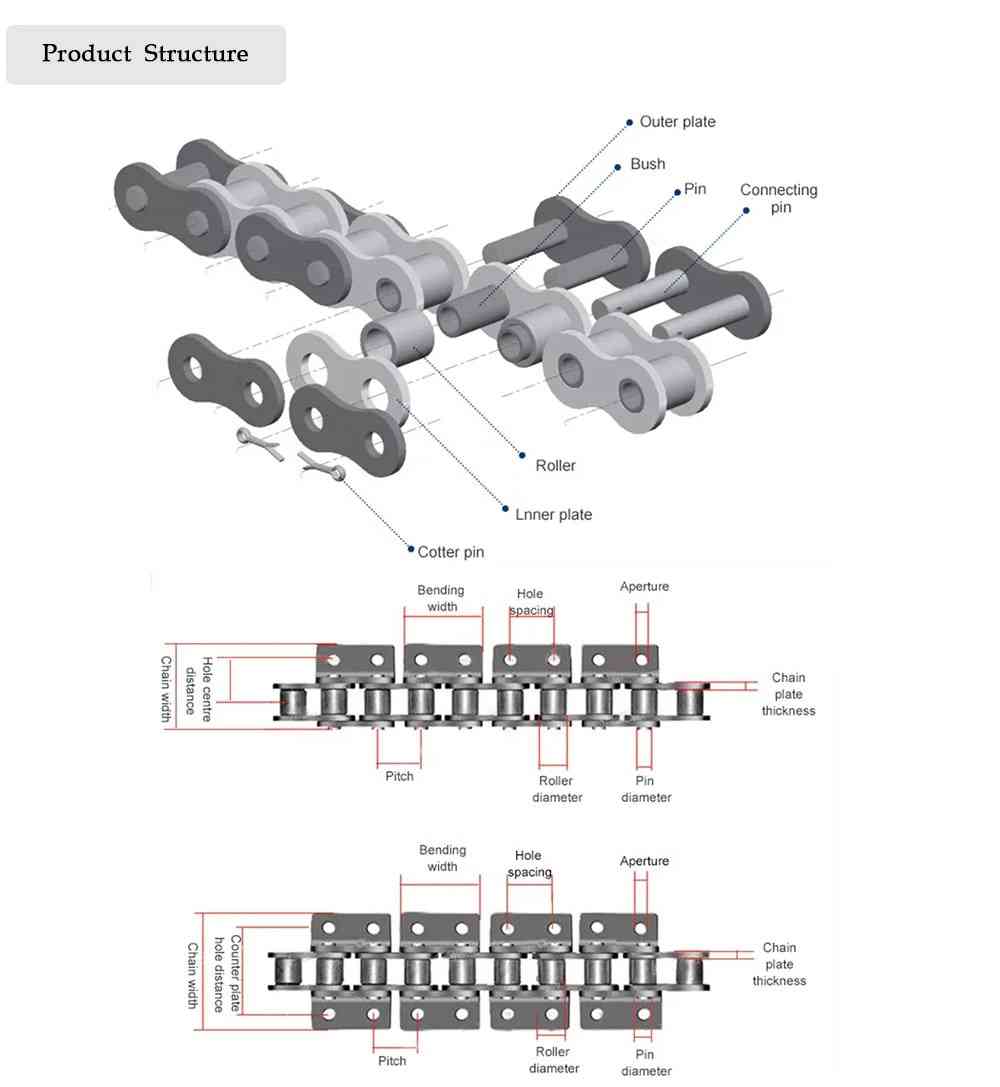
flat top chain
The flat-top chain system consists of hinge pins that support the chain to ensure efficient conveying. There are different types of hinge pins available, namely single and double. The single hinge pin is suitable for short chainplates and lightly loaded products. Dual hinge pins provide increased stability and load capacity. Flat top drive chains can be used in many different industries. In this article, we will learn about some important properties of flat-top chains.
Plastic flat top chains can transport medium to large workpiece pallets. They have a circular arc function that enables continuous drive combinations involving curved circular arcs. Plastic flat top chains are also recommended for workpiece pallets with PA wear pads. Steel flat-top chains can withstand surface loads up to 1.5 kg/cm, and HD profiles are suitable for steel chains. This chain is used in a variety of applications, including packaging machines.
mute chain
There are several types of mufflers that can silence your drive chain. One is the Ramsay silent chain, also known as the inverted tooth chain. These chains can be custom designed for specific needs. Exclusive Australian distributor of CZPT products that can help you find the most effective and affordable silent chain. In addition to silent chains, CZPT also manufactures sprockets and other hardware required for the drive.
Another type of mute chain is the CZPT chain. CZPT chains have involute teeth, while the ANSI standard specifies straight teeth. The advantage of silent chains is reduced noise and vibration output, and wider chains are more economical than multi-strand roller chains. The downside of silent chains is that they wear out quickly without lubrication.
The mute chain consists of two main parts, the pin and the plate. The pins are rotated in the same direction and positioned so that they can only engage the sprocket from one direction. Therefore, mute links are not recommended for reverse applications. To find out if your chain will work in reverse, consult the manufacturer’s catalog. CZPT chain.
conveyor chain
Drive chains and conveyor chains are essentially the same, but they are very different. The transmission chain is mainly used to transport heavy objects, and the conveyor chain is used to transport light objects. On the other hand, drive chains are usually driven by belts. Both types of chains can be used for the same purpose. This article will cover both types of chains. You can use them to convey various types of materials and products.
There are some differences between belts and chains, but both types can perform similar functions. The drive chain is used to drive the rollers, while the belt is used to move the object horizontally. The drive chain usually drives the rollers that move the conveyor belt. For a wide range of applications, conveyors and drive chains can be customized to meet specific needs. Here are some common uses of these two chains: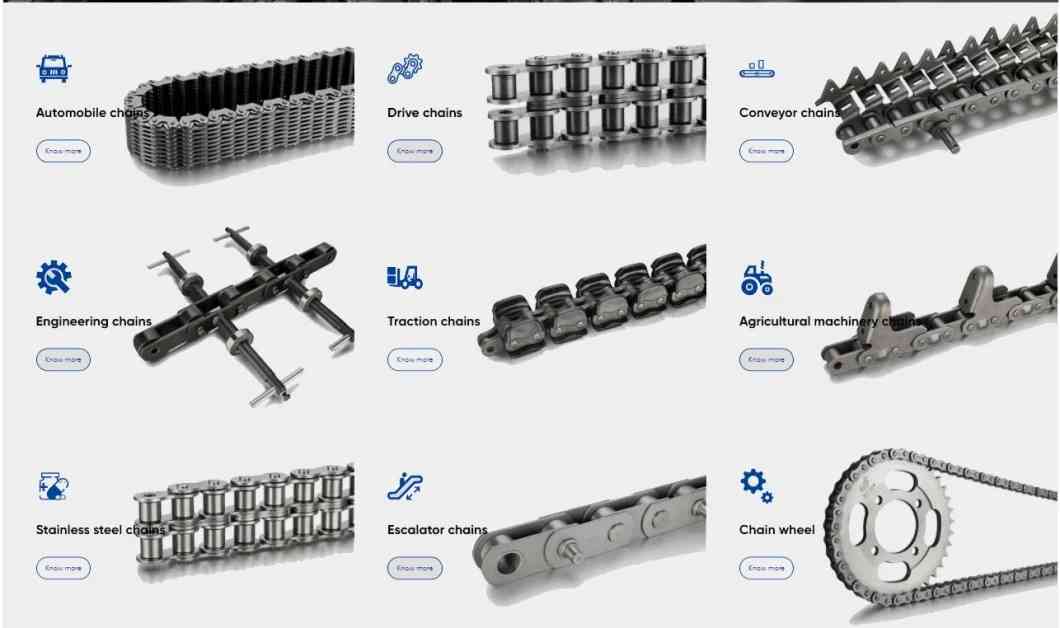
time chain
Timing chains fail for two reasons: complete damage and fatigue. Fatigue occurs when a timing chain reaches its breaking strength, and eventually, failure occurs when a timing chain exceeds its design life and suffers mechanical damage. Most timing chain failures are a combination of mechanical failure and fatigue. Chain chatter, engine misfires, and VVT systems can accelerate chain fatigue. If these causes of premature timing chain failure are not addressed, the timing chain could be permanently damaged.
In the past, the timing chain was the only drive chain available. Timing belts are a quieter alternative, but they are prone to failure and damage to valves and the engine. In recent years, OEM manufacturers have begun to return to the OHC/DOHC drive chain of the timing chain. This type of drive chain has many advantages, including the ability to simulate knock sensor vibrations. Additionally, the chain has better NVH performance, making it the drive chain of choice for automakers.
Timing Chains in Internal Combustion Engines
Internal combustion engines use timing chains to control intake and exhaust valves. The chain turns the camshaft at the right time and coordinates the movement of the valves on the cylinder head. This in turn allows the engine to generate power. The timing chain also controls the position of the intake and exhaust valves, ensuring that fuel and exhaust gases are expelled at the correct time. Incorrect timing in the vehicle can lead to misfires and other problems.
Chain drives in internal combustion engines are a common feature of many modern cars. It transmits rotational force from the crankshaft to the camshaft, which in turn controls the opening and closing of valves. The chain is lubricated with oil to prevent wear. Therefore, timing chains are often used in high-capacity engines, including trucks and motorcycles. But they do have some drawbacks.
A weakened timing chain can cause the engine to misfire, causing it to skip gears and lose coordination. A clicking sound may also indicate a problem. If the chain is too loose, it can also cause the engine to stall. If the chain is too loose, metal chips will appear in the oil. A clicking sound may also be heard when the engine is running. If you hear the engine stalling, it’s likely that the timing chain is the culprit.
Silent chains in internal combustion engines
The pitch difference between the drive sprocket and the silent chain reduces resonance sound, meshing shock, and accelerated wear at the chain and sprocket interface. The difference in pitch between the drive sprocket and the silent chain determines the loudness of the sound, and the system described here helps reduce it. The present invention is suitable for power transmission in internal combustion engines.
The earliest designs for silent chains come from the 1500s when Leonardo da Vinci sketched them. The SS Britannia propels the boat across the Atlantic using huge silent chains. By the mid-19th century, silent chains were used in nearly all types of industrial applications and as timing chains for early automobile engines. Due to their durability, these chains are durable and have smooth action.
In order to understand the mechanism of frictional losses in chains, various parameters must be considered. Speed, pitch, temperature and tension are the main parameters affecting friction loss. This test uses two types of chains to compare the frictional behavior between these two components. The results show that a single chain with a high pitch can increase the friction torque of another chain with the same pitch. These results provide an important basis for understanding the role of friction torque in internal combustion engines.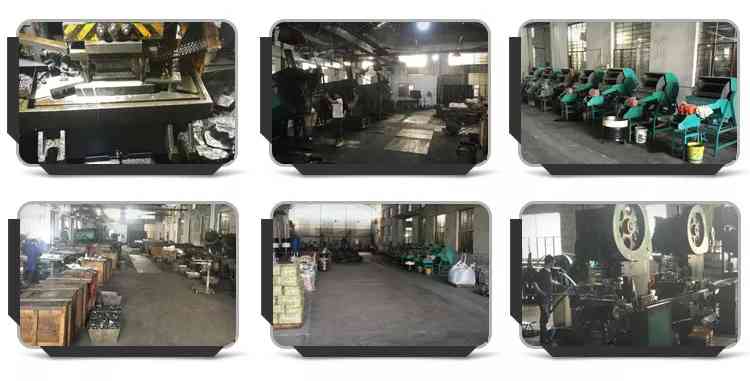
lifting chain
Lift chairs are designed to lift heavy objects and can be used with a variety of lifting equipment, including forklifts and cranes. Hoist chains are also used in warehouses and ports of all sizes and consist of a series of pins and plates that mesh with each other to move heavy loads. CZPT Chain manufactures high-precision lifting chains. Here are some of the benefits of hoist chains for drive chains.
Blade Chain: This type of drive chain has a patented U-profile that turns the flexible chain into a highly stable outer post during the push phase. This design is designed to minimize linkage tangling and provide better pressure transfer. These chains are used for cranes, anchors and straddle carriers. Blade chains are more durable than other types of drive chains and are especially useful in heavy duty applications.
The drive chain is also available in a variety of materials. For example, square link chains are commonly used in cranes and hoists. They are cheap to manufacture but more prone to overloading. Conveyor chains are specially designed for chain conveyor systems. It consists of a series of interconnected rectangular links. Oval links tend to kink and are usually only used at low speeds.


editor by czh